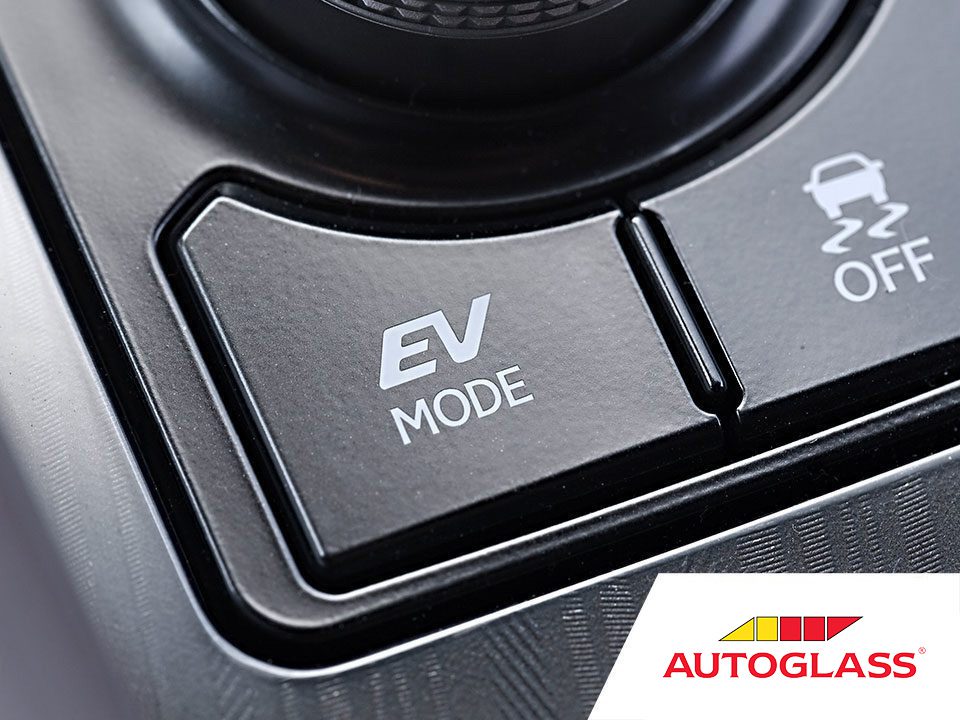
HEV, PHEV or EV – what should I go for?
Over the last number of years we’ve seen the number of Electric Vehicles on Irish roads rapidly increase and drivers are understandably enticed by the obvious electric car benefits. Crucially, Electric Vehicles (EVs) also play a major factor in Ireland’s Climate Action Plan as outlined by the government. As part of this nationwide initiative, a target has been put in place to see 945,000 Electric Vehicles on Irish roads by 2030, with 845,000 of these to be personal vehicles like private passenger cars.
Looking to get involved in the electric revolution but somewhat confused by the myriad of options available for first time electric car buyers? That’s understandable – making the leap into electric car ownership can often be a baffling experience as you are faced with a whole new set of jargon specific to electric motoring to get your head around. Not to worry! The Autoglass® blog is on hand to guide you through the world of selecting the right Electric Vehicle for you and your family.
First and foremost, you should familiarise yourself with the distinct kinds of EV cars you will encounter on the market today. There are three types of electric cars. Some run exclusively on battery power, while others combine battery and petrol power. So, with that in mind, Electric vehicles can be understood to fall under three distinct headings:
- Entirely battery-powered electric vehicles (EVs)
- Hybrid electric vehicles (HEVs)
- Plug-in hybrid electric vehicles (PHEVs)
Which one of these three is the ideal electric vehicle for you? Let’s take a look at what sets each type of vehicle apart and weigh up the pros and cons.
What Is an Electric Vehicle?
EVs, are entirely battery powered vehicles that do not utilise an internal combustion engine like those found in traditional automobiles. Instead, they are powered exclusively by one or more large batteries.
EVs like this have long existed in the marketplace but the first half of 2022 has proved to be something of a tipping point in terms of mass adoption. According to recently published statistics, entirely battery-powered EVs now make up nearly 5% of new car sales globally.
These days fully electric vehicles come in all shapes and sizes which means there’s an electric car to suit most budgets. What they all have in common though is that they won’t be going anywhere without a charged battery.
“Filling up” an EV is done by inserting a charging cable into a port on the exterior of the vehicle, much like you would refuel a traditional automobile at a petrol pump. As it stands, there are a variety of public and private charging options, though most EV users elect to charge their vehicles at home overnight. In fact, many manufacturers even include a home charger with your purchase, so be sure to investigate if this is on offer when considering purchasing a specific model of EV.
Once you are equipped for home charging, EVs like this are an excellent option for city driving. The majority of wholly electric EV drivers who are equipped for home charging do most of their driving without ever having to utilise a public charging station.
In terms of longer journeys, modern EVs can usually travel somewhere between 300 and 600 kilometres when fully charged. As respectable a distance as that is, one of the downsides of EV ownership is that you might have to make stops to charge if you’re travelling for multiple hours at a time. The coming years should hopefully see the fruits of further cooperation between carmakers and governments in terms of im
plementing a more comprehensive national fast charging network. But if you do choose to drive an EV, you may have to research your route for long roadtrips to take into account service stations or rest locations that are equipped to charge EVs.
Charging times and the distance you can travel is determined by the size of your car’s battery, so keep that in mind when you are considering what model of EV might best suit your needs.
A zero emissions future is ultimately what governments, car makers and many motorists are striving for and this is undoubtedly a major selling point for fully electric vehicles of this sort. While hybrids and PHEVs are undoubtedly a step in the right direction, you’ll need a fully electric car to be entirely emission free on the road.
Compared to the prices you might encounter when browsing for a new car, EVs may look relatively pricey upfront but electric car running costs are considerably lower as they are much cheaper to maintain than traditional cars due to the simplicity of their engine design.
What to consider before buying your First Electric Car >>
What Is a Hybrid Electric Vehicle?
Hybrid Electric Vehicles were the first EVs we saw arrive on the market. Hybrids combine an internal combustion engine with an electric-powered motor, switching between the two with a view toward improving fuel economy and reducing emissions.
For example, when a hybrid car is stopped idling, it is usually running on the electricity of the battery rather than using it’s engine. Once the hybrid starts up again, the internal combustion engine kicks back in.
Instead of charging through an external port like EVs, hybrids can fill up their batteries automatically through directing energy from the petrol engine. Hybrids also utilise “regenerative breaking” where, when you brake, the vehicle redirects kinetic energy that would be otherwise lost and uses it to charge the battery. The batteries found in the engines of Hybrid Electric Cars are relatively small, which means the battery in a hybrid can easily be charged up on the move – either by the engine or electricity generated when the vehicle is coasting or braking – without requiring charging from a plug-in. Some people refer to hybrids of this sort as “self-charging hybrid cars” to differentiate them from the plug-in hybrids (PHEVs). We’ll cover hybrid vs. plug in hybrid soon but first we should consider the pros and cons of hybrid cars.
Because hybrid cars are only equipped to travel a short distance on batteries alone, they make the most sense for city driving as opposed to if you’re driving long distances very regularly. Stop-start conditions mean you can make the most of electric mode in traffic and when you’re on the open road, the combustion engine starts to do the work.
If you’re driving over long distances on motorways, the electric motor still does its bit when you’re accelerating which helps with fuel economy.
In terms of price, Hybrids are usually more expensive upfront when compared to traditional combustion engine cars, but cheaper than fully electric plug-in EVs. Another point in favour of Hybrids is that, because of the certainty of a combustion engine, you won’t need to worry about charging, changing your driving habits or range.
The Time Has Come For All Drivers to be Eco Friendly >>
What Is a Plug-In Hybrid Electric Vehicle?
Many first time electric car buyers may not be aware there are different types of hybrid cars – HEVs and PHEVs. So, how does a plug in hybrid work and what is the difference between hybrid and plug in hybrid cars?
Essentially a combination of an EV and a hybrid, the aptly named plug-in hybrid electric vehicle (PHEV) or a “petrol plug in hybrid” is designed to run on a combination of a combustion engine and battery power. The key difference is that the power comes from plug-in chargers, making them very similar in principle to an EV. When the battery power runs out, PHEVs switch to their combustion engine like a hybrid. The major distinction between PHEVs and pure Hybrids being that PHEVs can travel further on exclusively battery power, meaning much better fuel economy for the driver.
On a full charge, depending on the model, a PHEV will typically allow you to drive somewhere between 30 and 80 kilometres on battery power alone. Once the battery has been entirely drained, the driver will have to rely on the petrol or diesel engine to carry on with their journey.
That is the PHEV cars major selling point; they offer drivers the opportunity to benefit from low-cost and carbon-efficient electric power, without always having to rely on the availability of public charging points or charging equipped service stations over the course of long journeys.
What to consider before buying a second hand electric car >>
Hybrid vs. Electric, Plug in Hybrid vs. Hybrid, Electric vs. Plug in Hybrid – there is a lot to consider! One thing for sure is that no matter which option you choose, you’re set to make major savings on fuel and you’ll be doing your bit to fight climate change.
We hope this explainer has shed some light on the key differences between the three electric car categories and you are feeling a bit more confident about making your first electric car purchase.
Be sure to check the Autoglass® blog again soon for more guides, motoring tips and explainers like this one. Safe travels.
Book an appointment now
For a quick and easy way to make an appointment book online now.
